The writers (and localizers) for Honkai: Star Rail have always shown an impressive sense of humor and knowledge of Internet memes or culture, and the “A Foxian Tale of the Haunted” flagship event in Version 1.5 is no different. With its innumerable social media posts, it presents the perfect opportunity to analyze how the localization can differ from language to language.
Call me married to the job. But even when I’m enjoying a video game, I cannot help but compare a game’s localization to the original text. This is never to nitpick. It’s almost always to see how a localizer or team chose to translate a term or phrase. This hobby is out of both professional and personal interest. Ever since the game came out, I’ve been vocal both publicly and privately about how much I enjoy Honkai: Star Rail’s localization. It’s easy and snappy to read, faithful to the original text, and strong on its own. So I took the chance when playing “A Foxian Tale of the Haunted” to compare the English localization to the Japanese one. Unfortunately, my familiarity with other languages prevented me from comparing more.
Where Star Rail‘s English Localization Succeeds
There are some oddities here and there. Every update, there are glaring typos that definitely feel like the localizers need some more time on QA. Missing letters, missing punctuation, missing capital letters in proper nouns… The list goes on. Fortunately, it’s never to the point that it’s distracting or incomprehensible. I definitely feel when reading Star Rail’s localization that the team has made the conscious choice to preserve certain specific Chinese terms. It’s like they’re expecting a base level of understanding from its audience. Early in the game, when talking to workers on Herta Space Station, they consistently attach ‘brother’ before Dan Heng and Arlan’s names. In the same vein, ‘auntie’ and ‘uncle’ appear often in comments to Guinaifen’s posts. Both examples use terms of endearment commonplace in Chinese but not English.
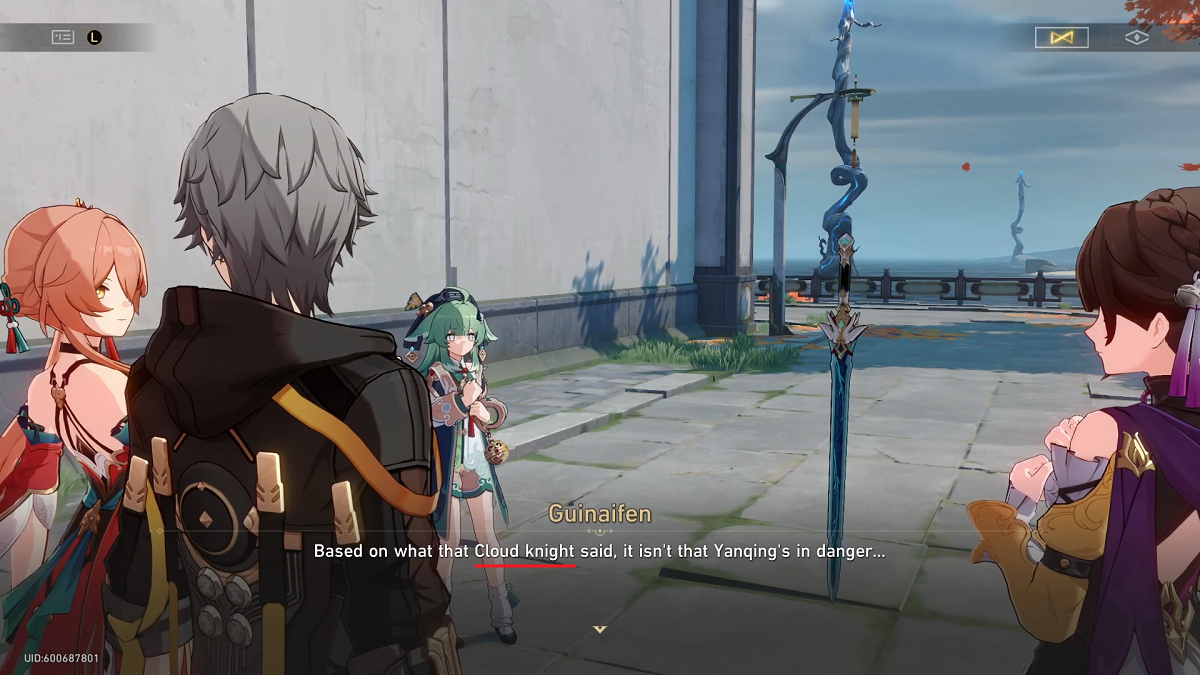
While the Genshin Impact localization feels more polished in that it lacks the errors Star Rail’s has, it’s admittedly a slog to read. It’s not just in how completing a single daily mission can take up to five minutes of my day because the NPCS and Paimon. Talk! So! Much! There’s something about the way characters word things that make it very hard to read. It’s clunky, wordy, and dry. They use twenty words to convey an idea that could have been done with ten, and with words that don’t feel natural in an everyday conversation. In contrast, Star Rail felt like a breath of fresh air with how smooth it was to read through both dialog and events.
In Translation: Context, Accuracy, Faithfulness
The moment that I started reading through Ghostly Grove, I felt a vague sense of irritation well up in me. It’s the same annoyance I feel when I scroll through Twitter…the same aggravation from reading TikTok comments. It’s the displeasure of having to see and deal with idiots or people suffering from the Dunning-Kruger effect. I’m truly impressed by the Star Rail writing staff’s ability to so accurately capture and recreate the vibe of being on a social networking site with useless mods. This is hardly the first time that Star Rail has been able to do this. It’s clear that the writers are either a younger bunch, or they’re online enough to have a legitimate understanding of Internet culture.
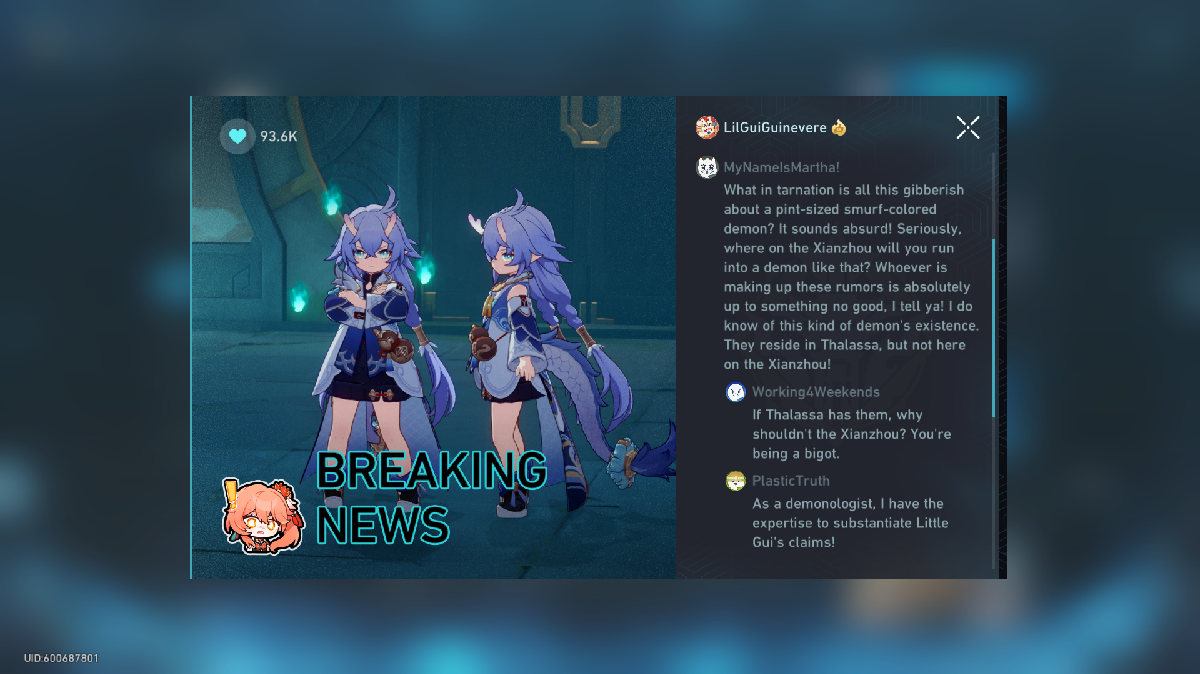
Obviously, when translating, you should keep the vibe of the original work. Something like Sword Art Online would and should use some gamer lingo in its translation. The same translator wouldn’t write, say, Restaurant to Another World in the same way because of the different genre. Another industry standard that localizers generally follow is that we should avoid adding in references that were not in the original text. I cannot remember the manga in question anymore. But a debate sparked on Twitter a while back about the addition of a ‘social distancing’ reference. However, the original manga released the chapter before the COVID-19 pandemic.
The source text’s joke was a generic one about putting distance. But with the reference to social distancing, the localizer turned it into one about COVID-19. Some were of the opinion that this was a big no-no. You cannot add in a reference like this. Others thought it was fine. The joke worked and communicated the original idea. Sometimes in localization, you might have no choice but to alter a joke. Take Gintama, for example, or Ghiaccio’s infamous rant in JoJo’s Bizarre Adventure. In those cases, an equivalent should ideally be used that expresses the same idea without altering it or, like the above social distancing example, add in a reference.
How Star Rail‘s English Localization Conveys the Original Chinese
The majority of references in Honkai: Star Rail’s English localization are either direct translations from the original Chinese text, or they’re ones that do not change the meaning of the original joke in a major way. It’s not that the localization is funny, it’s just that Star Rail legitimately is a funny game. It’s very unserious, if we’re going to stay on theme. Like the original Chinese text, it’s easy to see that the localizers are familiar with online lingo and memes. Some jokes that may seem like original creations of the English text, such as the Ast Rickley “Never Gonna Give You Up” reference in the data bank, are actually just an example of how something like the Tiffany Problem exists in Star Rail. It may be a surprise to learn just how global certain memes are, even when they seem exclusive to the English hemisphere.
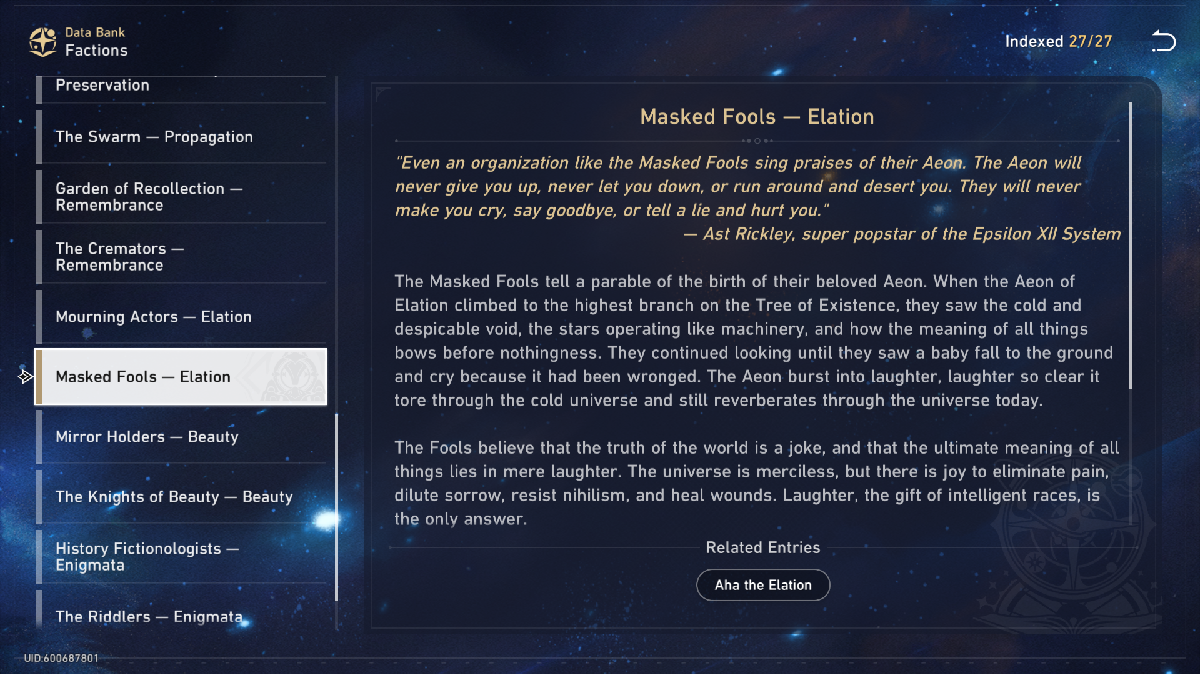
A quirk I particularly enjoyed in the English localization of Honkai: Star Rail that I only noticed in this event is ‘fam.’ The Chinese text actually uses ‘jia ren’ (家人). It has the same connotation as when a streamer asks ‘chat’ for advice or when someone affectionately refers to their online friend as their oomfie. Guinaifen consistently uses ‘fam’ and her Chinese voice-over says jia ren. Both English and Chinese have the same habit of playfully referring to close friends as family. That’s not so interesting on its own. What is is that Sushang in Chinese has the exact same habit. She also refers to friends as jia ren. However, the English localization has (to my knowledge) never made Sushang say fam. I assume that the reasoning is Sushang is far less online than Sampo and Guinaifen. Thus, she would not be the type to use fam in daily conversation.
The English localization is actually incredibly accurate compared to the Japanese one. This was very interesting because usually, similarities between the languages make it easier to get the full original meaning across. The Japanese localization for Star Rail reads incredibly awkward, and shows an unfamiliarity with meme or online culture. While the Star Rail Japanese Ghostly Grove is still as irritating to read as Twitter or TikTok comments, it lacks a lot of Japanese net slang. This is noticeable when you compare it to how the Chinese and English text peppers it in. Perhaps the most interesting thing to note in the Japanese text is the blatant usage of the word “mukbang.”
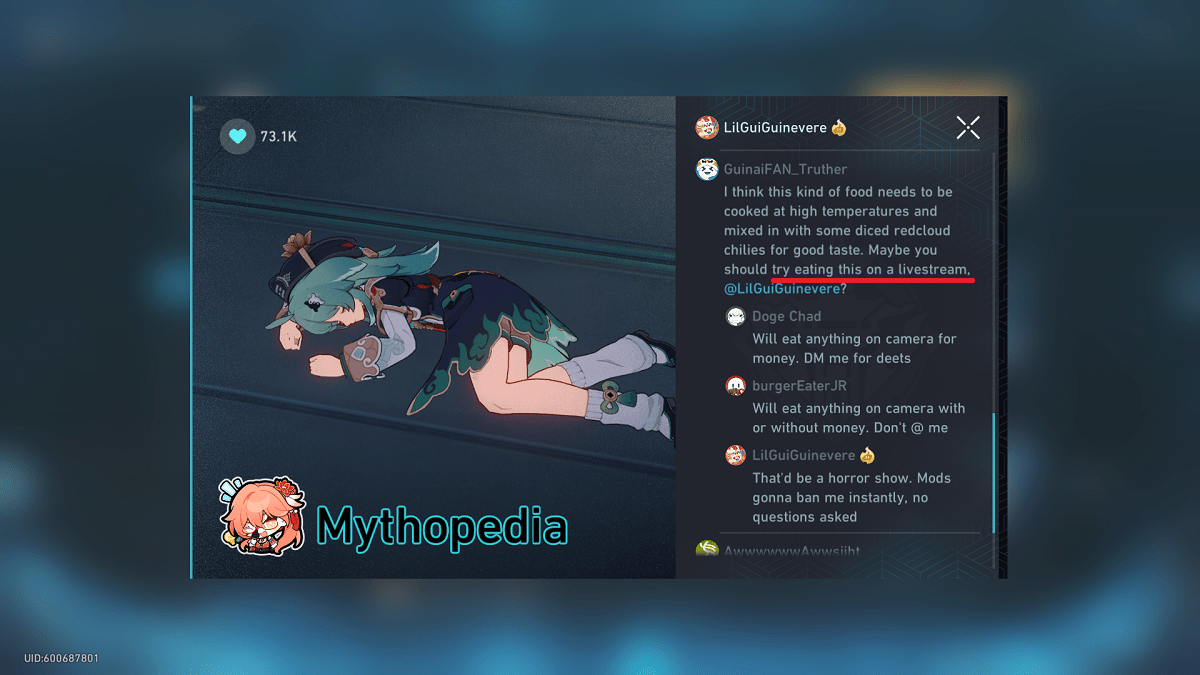
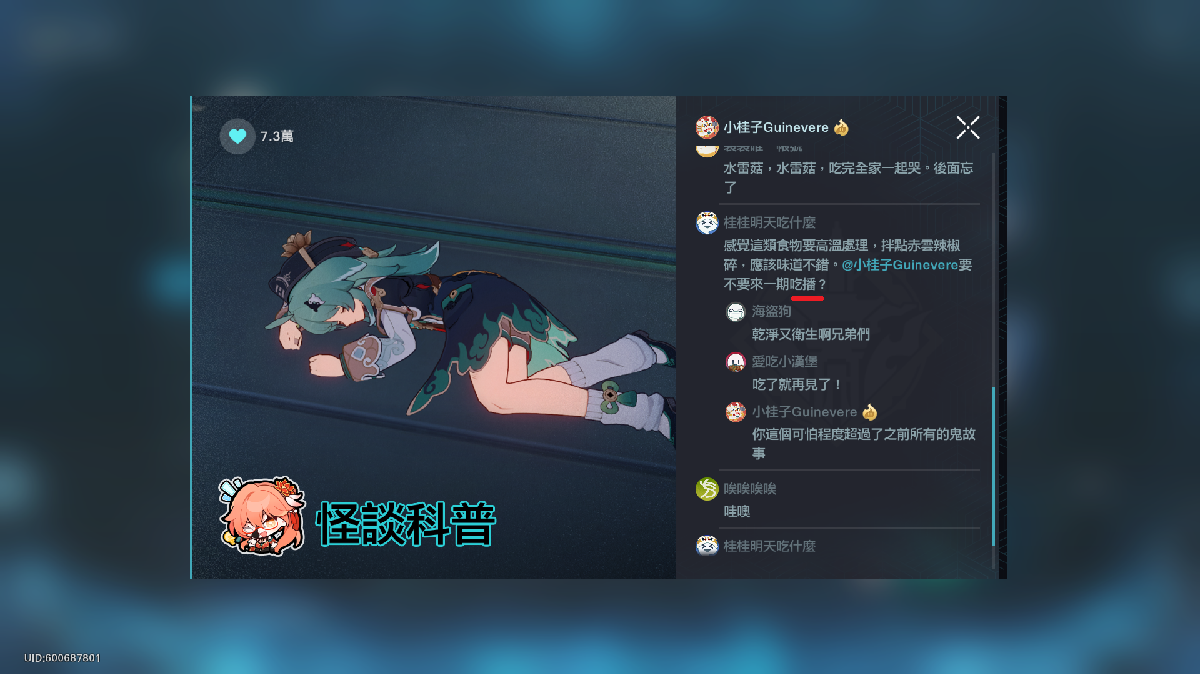
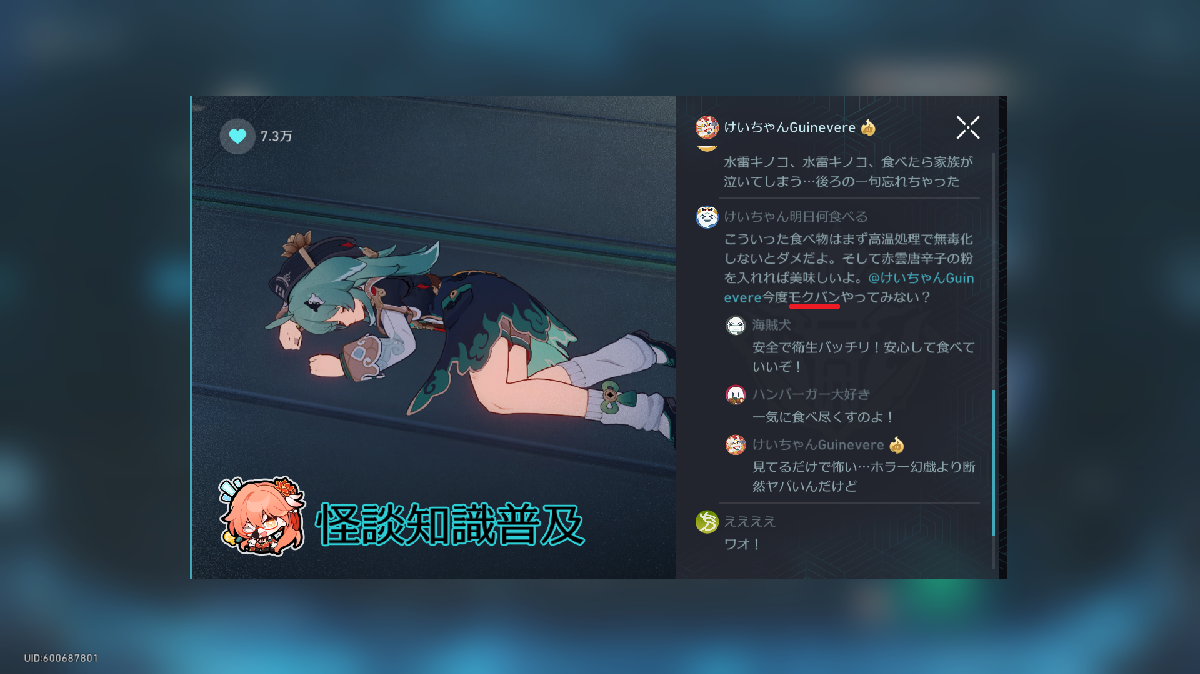
How Star Rail‘s Japanese Localization Differs From the Source
If you choose to frame one of the final quests of “A Foxian Tale of the Haunted” as a Mythopedia entry, someone will reply and suggest that Guinaifen do an eating livestream. It’s the same in Chinese. In the Japanese text, the commenter suggests she stream a mukbang. Only the Japanese version of the game (as far as I can tell) makes this reference. Now, the issue is: the usage of ‘mukbang’ seems like an incredibly specific reference that’s out of place. I don’t doubt the existence of mukbangs, considering how similar their social media culture is to ours. But would they really be called ‘mukbangs’?

I won’t nitpick the fact that ‘mukbang’ is a Korean loanword despite Star Rail‘s lack of an equivalent world. What the issue for me personally with the Japanese text using ‘mukbang’ is that it’s not just an eating stream. It’s a stream specifically focused on consuming large amounts of food. The appeal comes from either a social experience between viewer and streamer, or, frankly, a fetish thing. Using “mukbang” here when the commenter really just meant “an eating stream” felt off. It would be one thing if the Chinese text used “mukbang” as well, but it didn’t.
‘Mukbang’ is not the only oddity I noticed in the Japanese localization. Aside from how literal the translations seem (to the point of unnaturalness), I also noticed some mistranslations. One particular mistranslation is similar to the above mukbang one, in which Jing Yuan uses the Internet slang ‘meshiuma.’ The addition of ‘meshiuma’ is not only an added joke but it’s also an alteration of Jing Yuan’s characterization. Though a minor change, it’s a change nonetheless for no discernible reason. It’s fascinating to see in this event how the Japanese localization team uses a different approach and philosophy in Star Rail. Star Rail isn’t even the first foreign property to see this in. The history of Japanese localization is an interesting one, but that’s for another article.
TLDR
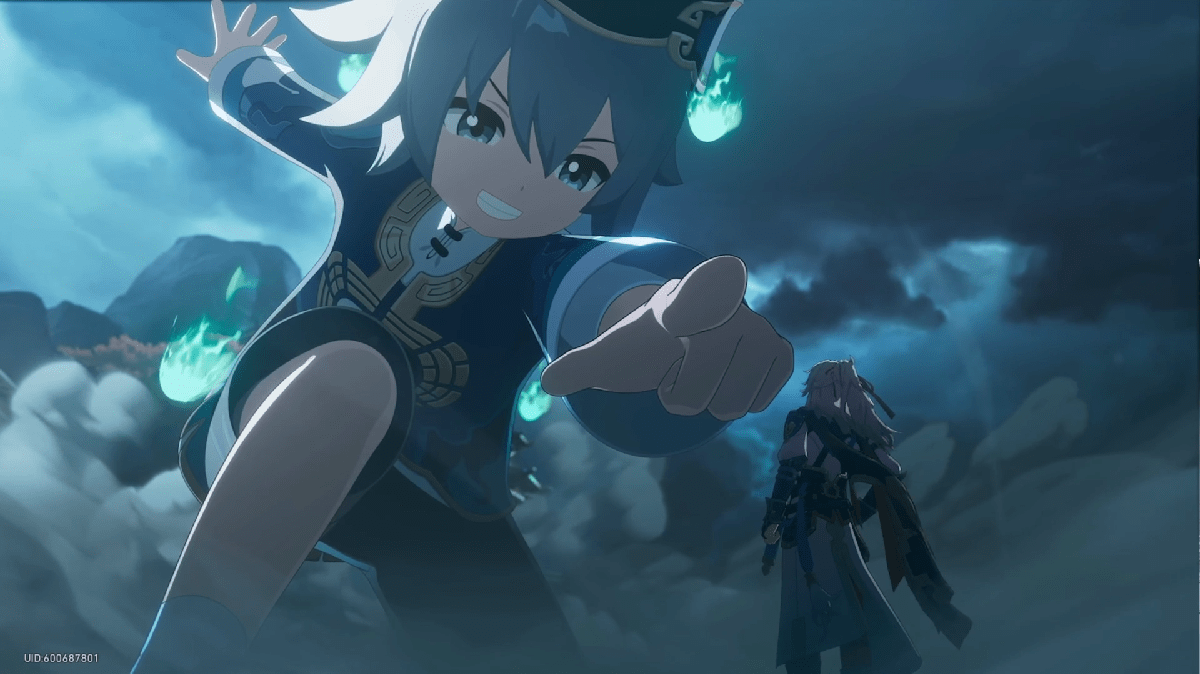
I honestly can go on for days about the localization of Honkai: Star Rail, as well as comparing the three different versions with each other. Despite all the text, they consistently maintain a fantastic quality. It makes me feel like some typos here and there are perfectly reasonable. Hopefully in future patches, the localization team will have either more manpower or time to put out the best work they can.
Honkai: Star Rail is readily available on the PS5, Windows PC, and mobile devices.

